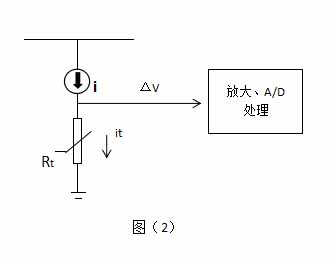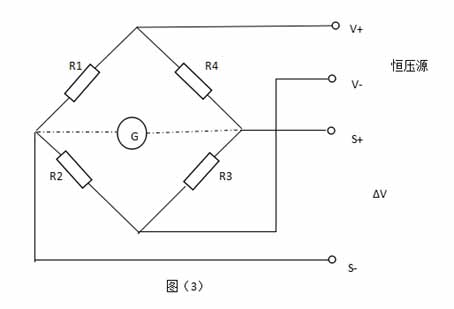How to read NTC thermistor in circuit
NTC thermistor is a resistance device whose resistance decreases with increasing temperature. In essence, it is a resistor with a large negative temperature coefficient, which uses this temperature characteristic (that is, the correlation between the resistance R and the temperature T: R-T diagram). It is not only widely used in various power supplies, motor control and other high-current, high-voltage circuit occasions to suppress and absorb and eliminate the surge voltage and current in the transient process of the circuit (the main function of the power NTC thermistor). And it is also widely used in various electronic temperature measuring instruments, electronic switches, household appliances and other equipment. Its main function is to be used as a sensitive element for precise measurement and precise temperature control. It and thermocouple, platinum resistance (PT100, Cu100, etc.) are known as one of the three most commonly used sensitive components in the field of temperature measurement.

Since the resistance value R of the NTC resistor has a certain functional relationship with the temperature T, the temperature value of the measured object can be indirectly sensed according to the resistance value of the NTC thermistor. In this way, measuring (perceiving) the temperature of the measured object becomes a problem of how to detect the resistance of the NTC thermistor. The commonly used specific reading circuit (acquisition circuit of sampled value) is as follows:
(1) General accuracy requirements: The acquisition of sampling data directly uses the constant current source (or constant voltage source) pull-up method. See figure (2).
Principle: The constant current source (or constant voltage source) is directly applied to the NTC thermistor Rt. When the temperature of the measured object changes, the resistance Rt of the NTC thermistor will follow the change. This change is reflected in the change of ΔV, and the temperature value of the measured object can be obtained by sampling the reading of ΔV. If it remains unchanged, △V=it*Rt.
Features: Simple, cost-effective, and can meet general accuracy requirements, but the temperature measurement accuracy and resolution are related to the stability of the constant current source (constant voltage source), and related to the heating performance of the NTC thermistor itself.

(2) Adopt Wheatstone bridge: high-precision reading method, use the method of Wheatstone bridge to accurately measure the resistance value to read data. See picture (3)
Principle: replace R4 with a suitable NTC thermistor Rt, connect it in series in the bridge circuit, add a constant voltage source to both ends of the circuit, and get the temperature difference signal △V from the other ends of the bridge;
When the bridge is balanced:
Rt=R4=R3*R1/R2, the ammeter reading is zero, △V=0; When Rt changes with temperature and its resistance changes, △V will change drastically.

Features: The circuit composition is slightly complicated, the cost performance is high, and the measurement accuracy and measurement resolution are high. It is currently the most commonly used method in electrical measurement technology and industrial automation control. The reading accuracy of the temperature difference data is related to the accuracy and stability of the external excitation source and the relevant parameters of the NTC thermistor itself. It is also related to the accuracy and value of the other three matching resistors R1, R2, and R3 in the bridge arm circuit.

Since the resistance value R of the NTC resistor has a certain functional relationship with the temperature T, the temperature value of the measured object can be indirectly sensed according to the resistance value of the NTC thermistor. In this way, measuring (perceiving) the temperature of the measured object becomes a problem of how to detect the resistance of the NTC thermistor. The commonly used specific reading circuit (acquisition circuit of sampled value) is as follows:
(1) General accuracy requirements: The acquisition of sampling data directly uses the constant current source (or constant voltage source) pull-up method. See figure (2).
Principle: The constant current source (or constant voltage source) is directly applied to the NTC thermistor Rt. When the temperature of the measured object changes, the resistance Rt of the NTC thermistor will follow the change. This change is reflected in the change of ΔV, and the temperature value of the measured object can be obtained by sampling the reading of ΔV. If it remains unchanged, △V=it*Rt.
Features: Simple, cost-effective, and can meet general accuracy requirements, but the temperature measurement accuracy and resolution are related to the stability of the constant current source (constant voltage source), and related to the heating performance of the NTC thermistor itself.

(2) Adopt Wheatstone bridge: high-precision reading method, use the method of Wheatstone bridge to accurately measure the resistance value to read data. See picture (3)
Principle: replace R4 with a suitable NTC thermistor Rt, connect it in series in the bridge circuit, add a constant voltage source to both ends of the circuit, and get the temperature difference signal △V from the other ends of the bridge;
When the bridge is balanced:
Rt=R4=R3*R1/R2, the ammeter reading is zero, △V=0; When Rt changes with temperature and its resistance changes, △V will change drastically.

Features: The circuit composition is slightly complicated, the cost performance is high, and the measurement accuracy and measurement resolution are high. It is currently the most commonly used method in electrical measurement technology and industrial automation control. The reading accuracy of the temperature difference data is related to the accuracy and stability of the external excitation source and the relevant parameters of the NTC thermistor itself. It is also related to the accuracy and value of the other three matching resistors R1, R2, and R3 in the bridge arm circuit.





